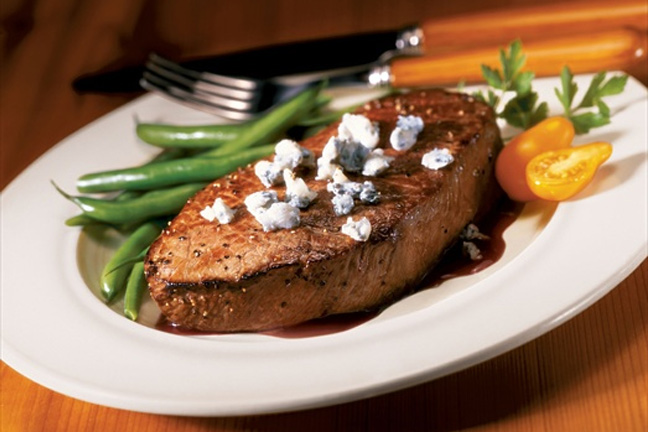
Agricultural News
OSU Research Shows Consumers' Preferences for Their Steaks is a Battle of 'Tradition' Versus 'New'
Thu, 30 Nov 2017 14:37:12 CST
 It has been said change is a constant, and that saying has certainly been proven accurate when it comes to those succulent steaks meat-lovers so love to eat.
It has been said change is a constant, and that saying has certainly been proven accurate when it comes to those succulent steaks meat-lovers so love to eat.
Improved genetics and feeding technologies, not to mention a number of economic incentives, have led to larger beef cattle over the decades. However, while cattle carcasses have increased in size - and along with it meat cut into steaks - most restaurants and grocery stores offer relatively fixed serving sizes, usually 6 ounces, 8 ounces, 12 ounces and 16 ounces.
"Most people don't want to eat a 32-ounce steak, with the consequence that steaks from today's larger beef cattle are often cut thinner than what was done traditionally," said Jayson Lusk, head of Purdue University's department of agricultural economics, speaking about research on which he worked while a faculty member at Oklahoma State University.
"That got us to wondering: For a fixed weight, do consumers prefer traditional thicker steaks that take up a smaller area on one's plate or newer thinner steaks that take up a larger area?" he said. "Presentation is known to correlate to varying degrees to what consumers want to buy."
Lusk and his fellow OSU researchers Derrell Peel and Josh Maples surveyed more than 1,000 U.S. consumers and presented them with a series of choices that varied the type, thickness, area and price of the steak. Once the thickness and area of a steak is known, the weight is pre-determined.
According to the study conclusion, "the decrease in consumer welfare by moving from a choice set containing small area and thick steaks to a choice set that includes large area and thin steaks implies that the changes in carcass size have led to a decrease in consumer utility from today's steak choices relative to the steak choices of a few decades ago."
"In essence, our survey implied consumer preference varies relative to steak size but are generally in unison in their dislike for the thinnest cuts of steaks," Lusk said. "The aggregate welfare loss from the increase in carcass weight with respect to ribeye and sirloin steaks is $8.6 billion for the two largest classes. That is significant."
More meat on the hoof
To provide some perspective, U.S. Department of Agriculture data indicate average weights of commercially slaughtered cattle hovered around 1,000 pounds from the 1950s midway through the 1970s.
"Since 1975, there has been a steady increase in the size of beef cattle," said Peel, one of the study's researchers and the OSU Cooperative Extension livestock marketing specialist. "Finished cattle weights have increased about nine pounds per year on average. In 2016, the average weight was 1,363 pounds, which is 366 pounds more than the average weight in 1975."
Still, steaks are only one type of cut. Larger steaks can be offset by increases in quantity produced of other cuts. Ground beef is a prominent example.
"Ground beef increases proportionally as carcass size increases, and so more meat per animal has likely led to increases in consumer value through lower prices or smaller increases in prices resulting from the decrease in number of cattle slaughtered," Peel said. "Ground beef can be marketed in pretty much any size package, as opposed to steaks."
However, steaks represent an important portion of the total carcass value and it is possible the increase in size of other cuts also may have created less desirable end products for consumers.
"This study was recently published in volume 74 of the peer-reviewed Food Policy journal," Peel said. "Steak size has not traditionally been thought of as a quality characteristic relative to steaks. We hope this study helps promote greater industry awareness and discussion of the implications of increasing carcass size."
Peel and Lusk added future research should focus on the effects of increased carcass weights on consumer welfare across multiple cuts.
"Such studies might find that while welfare losses exist for some cuts, the gains in welfare from other cuts lead to a net increase in consumer welfare due to larger cattle," Lusk said.
The Oklahoma Cooperative Extension Service is one of two state agencies administered by OSU's Division of Agricultural Sciences and Natural Resources, along with DASNR's statewide Oklahoma Agricultural Experiment Station system, the official research arm of the division.
Purdue's department of agricultural economics is part of the university's College of Agriculture, renowned for its programs in the agricultural, food, life and natural resource sciences.
Source - Oklahoma State University
WebReadyTM Powered by WireReady® NSI
Top Agricultural News
More Headlines...





